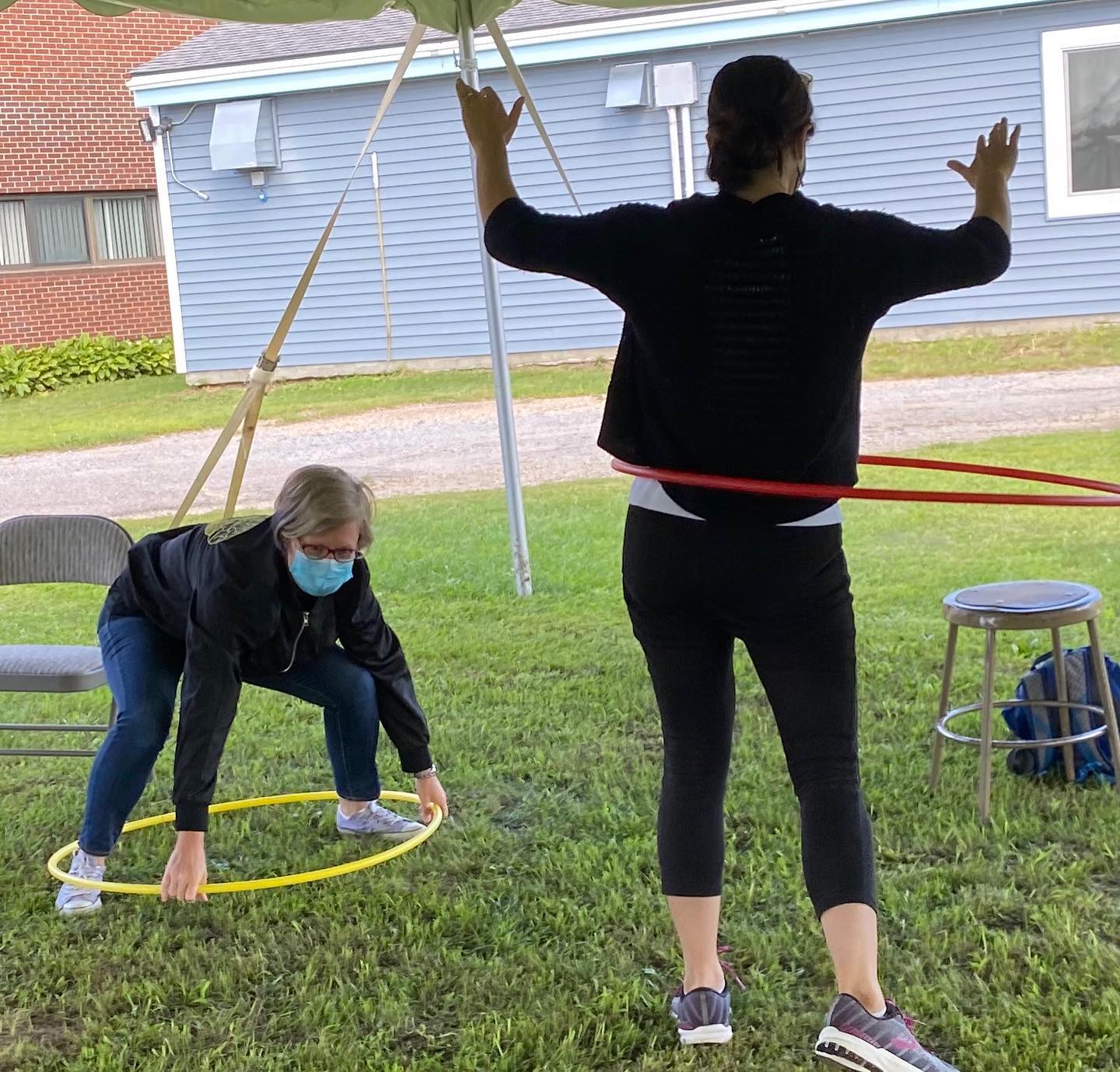
Written by Emma Bricker
February is Active Classroom Month, so let’s take a look at how we can leverage movement not just in every classroom, but also to bolster mental and physical wellness for us and for our students! How many times have you said, or heard a colleague say, ‘I need to take a walk to clear my head.’ or ‘I need to go outside and get some fresh air for a while.’? What is it about that little break that restores not only the spirit, but the energy and inclination to continue with the task at hand? According to Srini Pillay, MD, a contributor to Harvard Health Publishing from the Harvard Medical School, “When you are too exhausted to use thought control strategies such as focusing on the positive, or looking at the situation from another angle, movement can come to the rescue. By working out, going on a meditative walk by yourself, or going for a synchronized walk with someone, you may gain access to a “back door” to the mental changes that you desire without having to “psych yourself” into feeling better.” Increasing blood flow to the brain bolsters mental clarity, cognitive development, as well as physical health. Remember when you were a kid and recess allowed for a total reset? It hasn’t changed, even as we have become adults!
We can understand, from our perspective, how important movement is for our own mental and physical well-being, so let’s take a look at how it benefits our students. There is a lot of research available that demonstrates the correlation between movement, learning and student achievement, and well-being. A constant component in an OWL classroom is kinesthetic movement. Linking physical movement to content and concepts aid in retention and recall of the information. Eric Jensen, who has vast experience with brain research, tells us, “Simple biology supports the obvious link between movement and learning” (Jensen, 2005, p. 62). Jensen explains that oxygen is necessary for brain function, more blood flow equals more oxygen –physical activity increases blood flow (2005). Other outcomes of increased exercise/movement are: more cortical mass, greater number of connections among neurons, and gene expression to improve learning and memory (Jensen, 2005). It has also been documented that stimulating the vestibular (inner ear) and cerebeller (motor activity) system through movement activities (spinning, crawling, rolling, jumping, bending ect.) can result in “significant gains in attention and reading” (Jensen, 2005, 62). All of these activities, in one form or another, can take place within our classrooms, within our lessons, giving our students not just the advantage of physical wellness, but gains in academic achievement as well. With something so elemental as movement, why not try implementing some into your classes?
Movement though, is not just for physical wellness and academic achievement. It also supports social growth and negotiation. When children develop these personal and social skills (peer relationship skills, prosocial behaviours (e.g. respect), leadership skills, problem-solving skills, and personal and social responsibility skills), they will not only be more successful learners, they will also be more likely to make a more successful transition to adult life (Wright and Craig, 2011). Incorporating movement in class is also an exceptional way to integrate SEL into every lesson, thus strengthening personal and social skills. The Collaborative for Academic, Social, and Emotional Learning (CASEL) encourages using activities that include movement to encourage inclusion, community and connection to the academic tasks of the day. Movement every day, in every class is so much more than simple play!
So, not only during Active Classroom Month but from today into the future, let’s abandon the ‘sit and git’ model of the past and build in movement! There are so many compelling reasons, not least of which is the increased engagement and joy taking place in the classroom!
Resources
Jensen, E. (2005). Teaching with the brain in mind. (2nd edition). Alexandria, VA: Association for Supervision and Curriculum Development.
Wright, PM, Craig, MW (2011) Tool for assessing responsibility-based education (TARE): Instrument development, content validity, and inter-rater reliability. Measurement in Physical Education and Exercise Science 15(3): 204–219.
